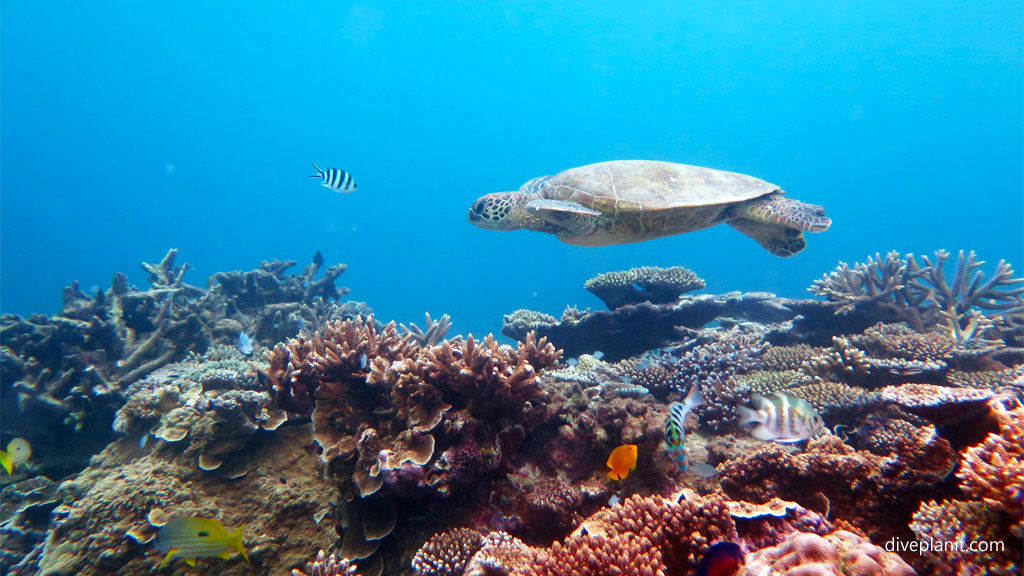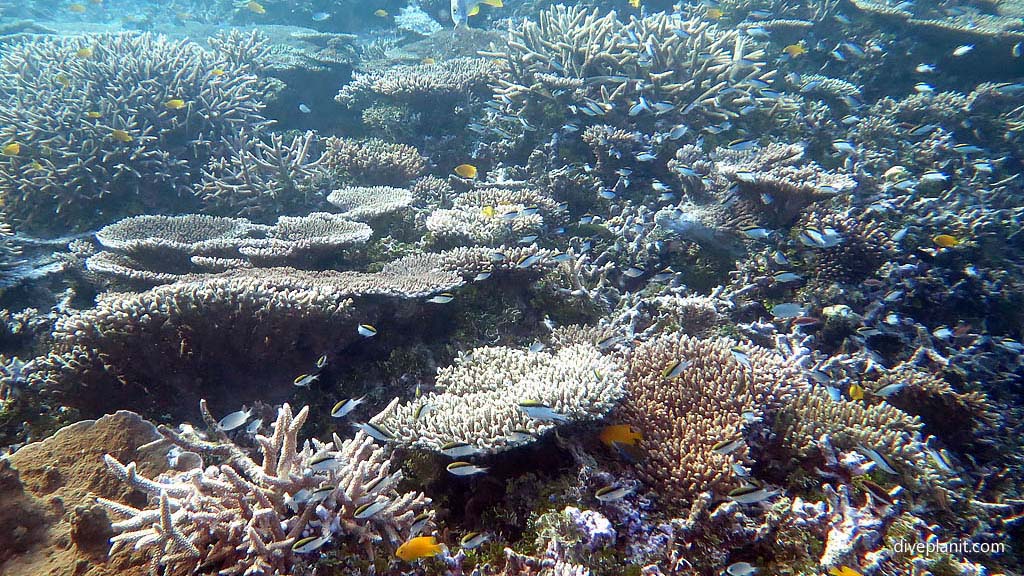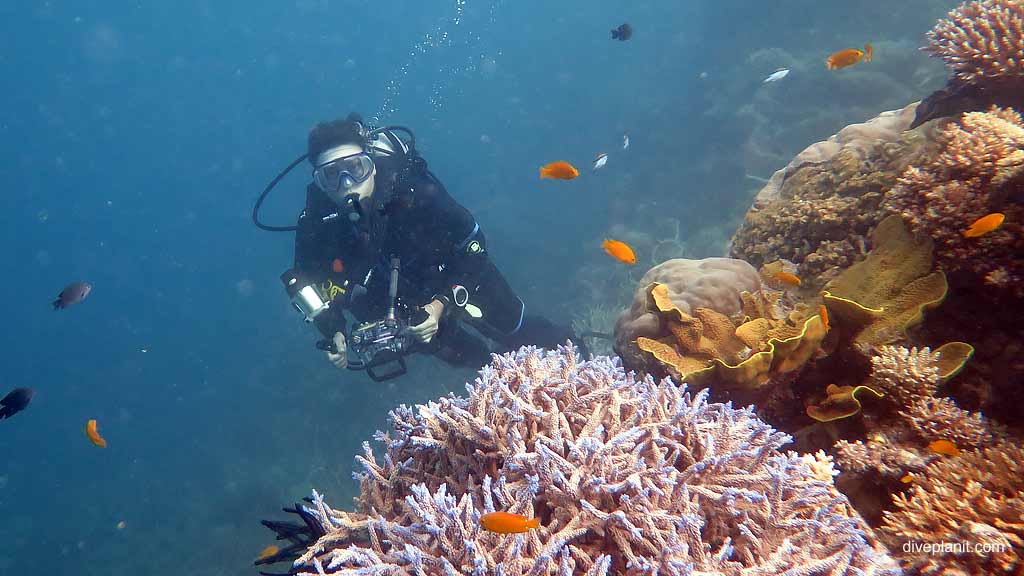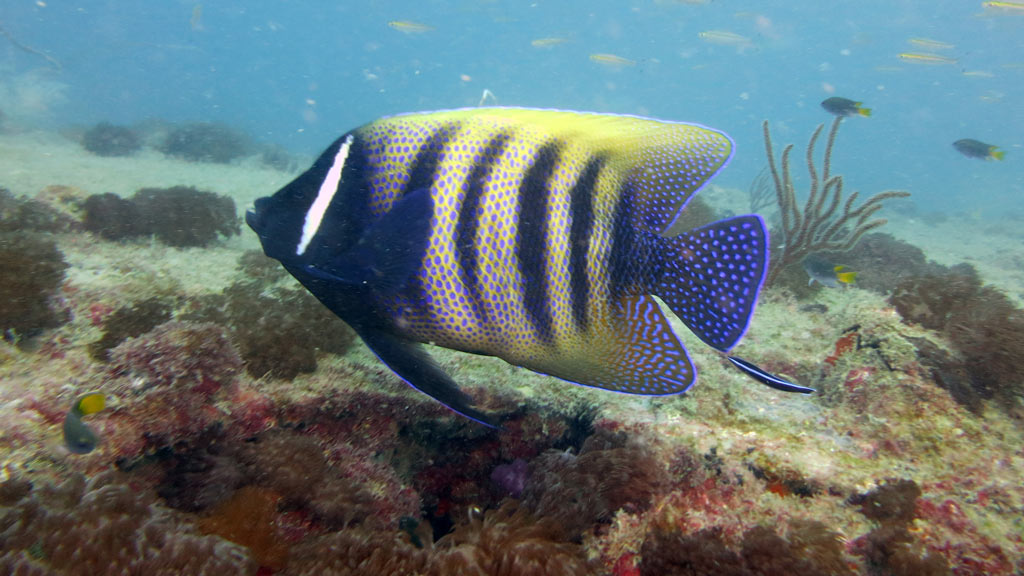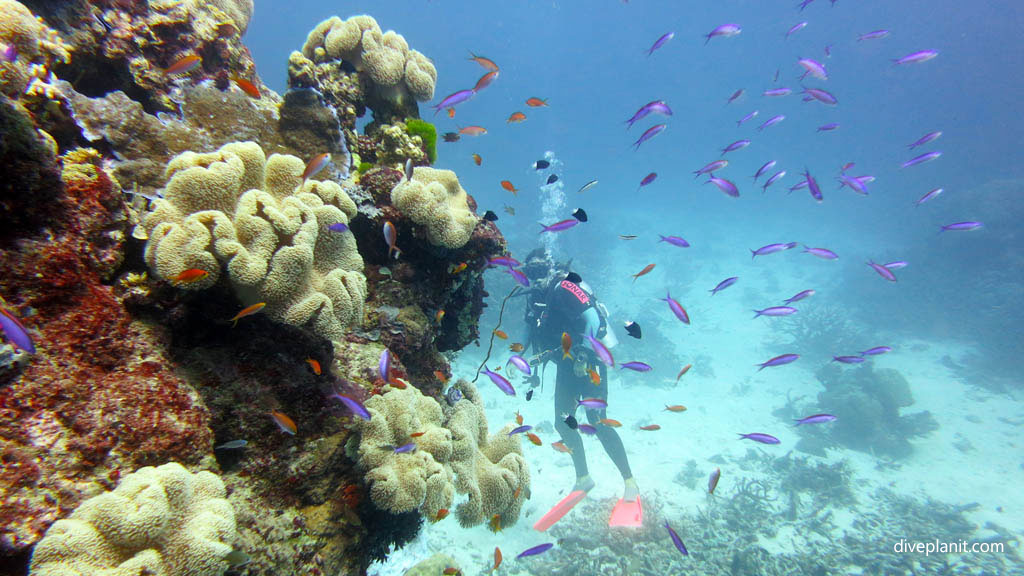If you thought our Great Barrier Reef was just for snorkelers, think again. And, despite what you may have heard about the ‘great coral bleaching‘, our Great Barrier Reef still has some great dive sites. It’s a particularly good place to make the transition from snorkeler to discover diver, or get some experience under your weight belt if you’ve just got certified.
Firstly a disclaimer: Diveplanit never claims to list “THE” best diving places – as there’s no such thing. One of our favourite dive sites might not be yours – every diver has their own preferences and beauty has always been in the eye of the beholder.
Our aim is to reveal new and accessible places for you to try which we’ve found exciting for the reasons we give. Additions and Comments are always welcome via the comments box below. So from south to north – here some places you should definitely check out.
Southern Great Barrier Reef
Lady Elliot Island
Being a small coral cay surrounded by fringing reef just 10km from the continental shelf, Lady Elliot Island offers the best place on the Reef for a manta ray encounter. The distance from the mainland (56km – a short flight from Hervey Bay) means the coral reefs are in pristine condition; and proximity to the shelf means encounters with pelagics like mantas and whales are very common. It’s also home to nesting turtles, so you will encounter turtles on almost every dive and even snorkeling the shallow fringing reefs.
Everything has its season on Lady Elliot – so be sure to check out their seasonal fauna calendar. They also have a great educational centre and are home to Project Manta.
Lady Elliot Island Eco-resort offers a dive course spread over a full week so you can learn to dive and enjoy a week’s holiday. With its whale season, manta season and turtle season – there’s plenty going off all year round for discovering and certified divers.
Heron Island
Heron Island is also a coral cay about 50km offshore, and accessible by boat and seaplane from Gladstone. The cay is a notable turtle nesting site and turtles are likely to be encountered on every dive. The coral reefs surrounding Heron are in perfect condition and support thriving marine ecosystems. Much larger than Lady Elliot, the sandy island has a 100+ room resort complete with Marine Centre offering scuba diving, and an information centre offering guided walks to see the sea, land and air-based fauna.
In turtle season on Heron – November to March – you can see turtles nesting on the beach, and a few months later, watch the new hatchlings scamper down the beach to their ocean home.
Heron Island Marine Centre offers the standard 4 day Open Water course with training in the resort pool. The dive boat goes out at least twice daily to the surrounding reefs, just a 10-15 boat ride away. Many of the sites around Heron are at less than 18m, and hence ideal for newly certified divers.
The Whitsundays Area
Hardy Reef
Whether you’re staying in Airlie Beach, or on Hamilton, take a day trip with Cruise Whitsundays to Hardy Reef – where they have a reef pontoon. There you can dive amongst batfish, titan triggers and angelfish. A giant Queensland Grouper lives under the Hardy Reef pontoon, and turtles regularly visit.
The pontoon is a particularly good place to do a discovery dive, as the steps into the water allow for a particularly gentle entry into the underwater world and there’s immediately plenty to see. Also, the participant/instructor ratio is 2:1.
The pontoon also offers a unique experience for certified divers: the chance to spend a day diving on the outer reef, then sleep there under the stars – followed by more diving the next day! More than just diving, it’s an opportunity to experience the tranquillity of being on the outer reef overnight.
Townsville Area
The Wreck of the SS Yongala
By now you will have realised that diving the Great Barrier Reef – is not just about diving the reefs of the Reef. There are coral cays and continental islands, and one particularly famous artificial reef: the wreck of the SS Yongala.
Rated one of the best wreck dives in the World, within a single dive on the Yongala you’ll likely to be able to tick off most of the Great Eight. The wreck, which sank in 1911, is an isolated artificial reef that really attracts ‘the big stuff’, including large schools of batfish and barracuda, swarms of jacks and inquisitive sea snakes that follow you searching for food stirred up by your fin kicks. As the immediate vicinity of the wreck is a no-take marine protected area, and the wreck is awash with cleaning stations, divers are also likely to see many common reef fish like angels and butterflies in addition to Maori wrasse, giant trevally and a huge resident Queensland Groper usually located at the bow.
For the shortest commute to the Yongala, go with Yongala Dive at Alva Beach near Ayr. The time you spend on the road from Townsville – you save in the boat to the Yongala – which can be a blessing when the weather’s being unkind.
Cairns & Port Douglas Area
Ribbon Reefs
The day boats that depart Cairns and Port Douglas have leases on a number of the reefs in the Cairns / Port Douglas area. They take snorkelers and divers to their different moorings each day, to ensure that the reefs are not stressed by too many visits, and to provide dive guests with the best experience on the day according to the conditions.
The Ribbon Reefs lie north of this area, adjacent Cooktown, stretching from Ribbon Reef #1 up to Ribbon Reef #10, the northern point of which is level with Lizard Island. The Reefs are home to a number of exciting dive sites, including Steve’s Bommie – an isolated pinnacle. Being on the outer edge of the reef, and bounded on one side by the deep blue Coral Sea (have a look in Google Maps Satellite view), as well as the usual colourful reef fish, you’ll see bigger reef fish like grouper, cod and bream.
Unfortunately, the Ribbon Reefs are ‘liveaboard territory’, can you can do a four day trip with Coral Expeditions, as well as the two well-known liveaboards, Spoilsport and Spirit of Freedom which cruise through on their way to the Coral Sea.
Why not share with us your favourite site on our Great Barrier Reef?

